As the train covers the hundred or so kilometers that separates Beijing and Tianjin at 300 kilometers an hour, the many memories I have here crowd through my mind. I have a kind of love for Tianjin. That will be hard to put into words, though I will try throughout this series. Tianjin returns that love, in a fashion, on its own terms and in its own way. You are embraced until you want to get away. You are noticed until scrutinized. A city that admits everyone yet is so wrapped up in itself that you disappear. It is like visiting your grandmother’s house. Tianjin is warm and loving, but you know you cannot stay forever.
I’ve been coming here since 1998, when I would fly in every few months to see an oak chair-making factory on the far outskirts owned by a pair of guys who couldn’t be more different individuals. Together they made the best oak spindle chairs. In 2004, I met my wife there, in her first job. Neither of us belonged there, but she came there knowing it. Her family lived around the Hongqiao district of Tianjin, and as I kept coming around there to press my case, I also came to know the jewel in the culinary and cultural crown that was close by, Xibei Jiao. It means, “northwest street”.
Now I have to say first that Xibei Jiao looked nothing like this in 2004, in fact it looked nothing like this just two years ago. This is an old neighborhood, very old, predating any of the buildings surrounding the little maze of streets today. A renaissance of tourism is taking place across China, and XiBei has become a tourist attraction that brings in traffic from all over.
XiBei Jiao is famous for breakfast foods, and when I was first taken to get breakfast, there was a scattering of food carts at the entrance of what looked to me like a shanty town of narrow alleys. Buyers, elderly to a man, lined up along window fronts behind which white clothed ladies bustled about in kitchens and assorted breads, meats, and sweets were piled high. People would shout into a sliding window, hand over cash, and a bag of buns would come out.
It looked a bit shady, and it didn’t look so clean. I was glad we didn’t have to walk far into those alleys to come away with our goods. Silly me, but that’s who I was, acting only on what I knew. But oh the taste! The best date bread, the crispiest dough sticks, sesame congee, breads as satisfying as any I’ve had in Europe, as pleasurable and deleterious to your health as the most egregious and delicious US donut.
And the signature fare, the main objective of every breakfast mission, was my favourite, the Jianbing Guozi (煎饼果子).
The only way to properly enjoy these is made in front of you and eaten as soon as possible. A kind of crepe, mung bean flour is mixed with egg and spread over a hot surface. You can add spicy fillings. The skill of the guy is mesmerizing to watch as he pours a ladle of batter onto the hotplate, deftly loosens and flips it over as it sets, appears to almost throw small spoonful's of spices onto the surface, adds the crispy bread or dough stick, folds and hands it over to you. He’s been doing this for near 30 years.
The origins of the jianbing go back 2000 years. Who knows the truth, but who cares? The origin story is attributed to one of, if not THE strategist and genius of military history, Zhuge Liang. He is one of the stars of the book, The Romance of the Three Kingdoms. After his army lost their cooking equipment (don’t ask), General Liang told his soldiers to cook their batter on their shields and wrap whatever they had in the crepe.
Now at risk of appearing snooty, true jianbing is found in Tianjin. The flour has to be mung bean (绿豆), or it isn’t the real deal. Jianbing can be found all over China, and increasingly internationally, but the mung bean ingredient is almost always exclusive to Tianjin. I’ve been around and it isn’t the same in other places. White flour tastes great but just doesn’t make the grade.
I mean it, you should eat right away. Everyone knows this. People will sit on a bench in below zero temps to enjoy right on the spot. Some of the quality is lost even the short walk to the apartment. On a holiday like New Years, people will come from all over. Even on any old weekend, Beijing residents will come to spend the weekend, or just come in on the express train to pick up supplies and return. We heard a cacophony of dialects and accents, now young and old, turning XiBei from a relic to a thriving and alive community. What a transformation.
There was always the spark of life here, living history, authentic the way real people live. The swell and crush of people this week doesn’t take away that authenticity, but celebrates it. The people coming here on a regular day exceeds 10,000 to 20,000. Over the 2025 new year holiday week, 800,000 people visited XiBei Jiao. They come for the love of it, smiles all around. There are no politics here, no regionality. Preserving culture takes money and conscientious effort. Better still if the preservation preserves the energy and life of the past.
After your savoury jianbing breakfast, I do hope we’re not done. I like to end with something sweet. Get yourself a slab of Tang Guozi (糖果子), brown sugar on fried dough.
Light and fluffy, slightly crispy on the outside, sweet and salty, a festival of fats and carbs just finely tuned to spark off every pleasure receptor in my brain. 😂 I’m not saying the Chinese and Americans are in some kind of competition for most delicious and problematic cuisine, but I’m also not-not saying it.
My love for Tianjin goes far beyond food, as I hope will come across in this series. We will see wealth and culture do their work on a great mind and Buddhist monk, the best 5A culture street, a six generation family of craftsmen, and look at the history of my family. Finally, we will visit the oddest and most surprisingly rewarding museum we’ve ever seen, and make good on a promise I made to us on April 15, 2024.






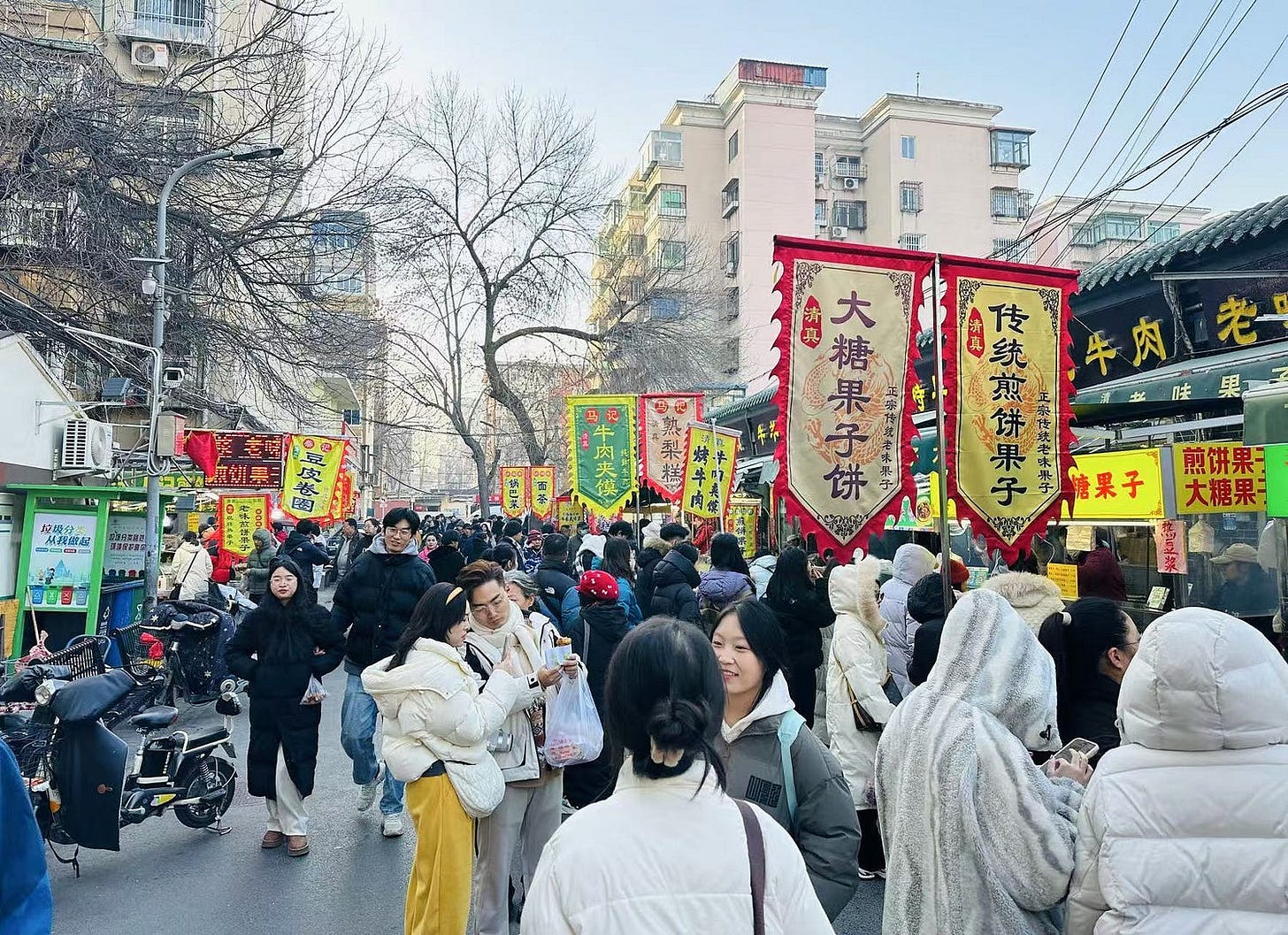
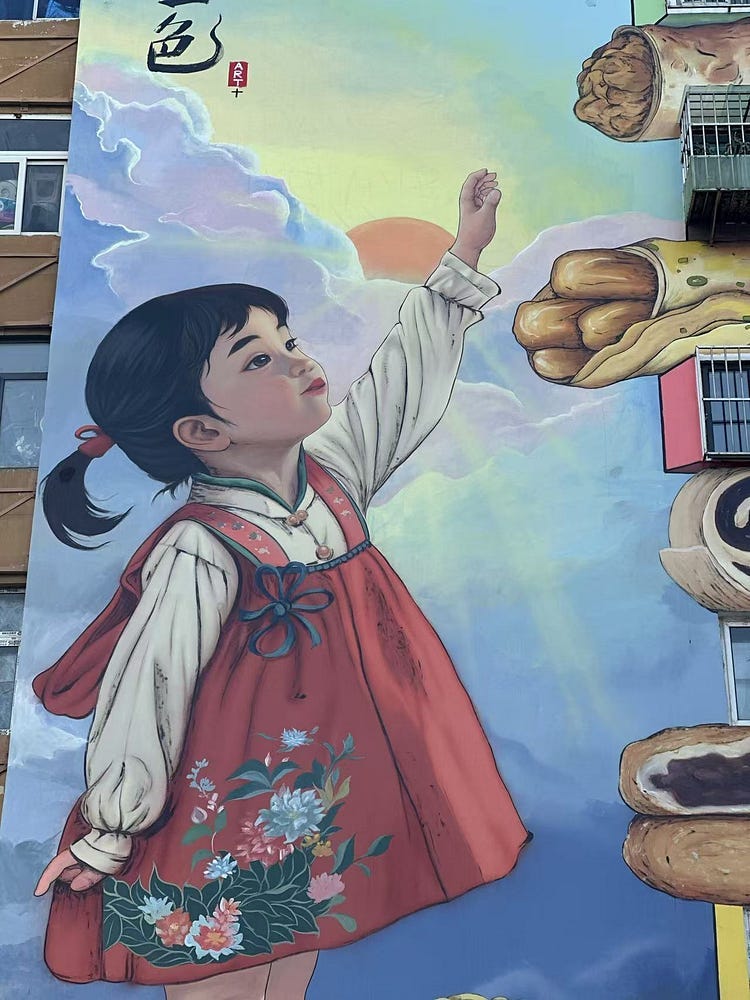
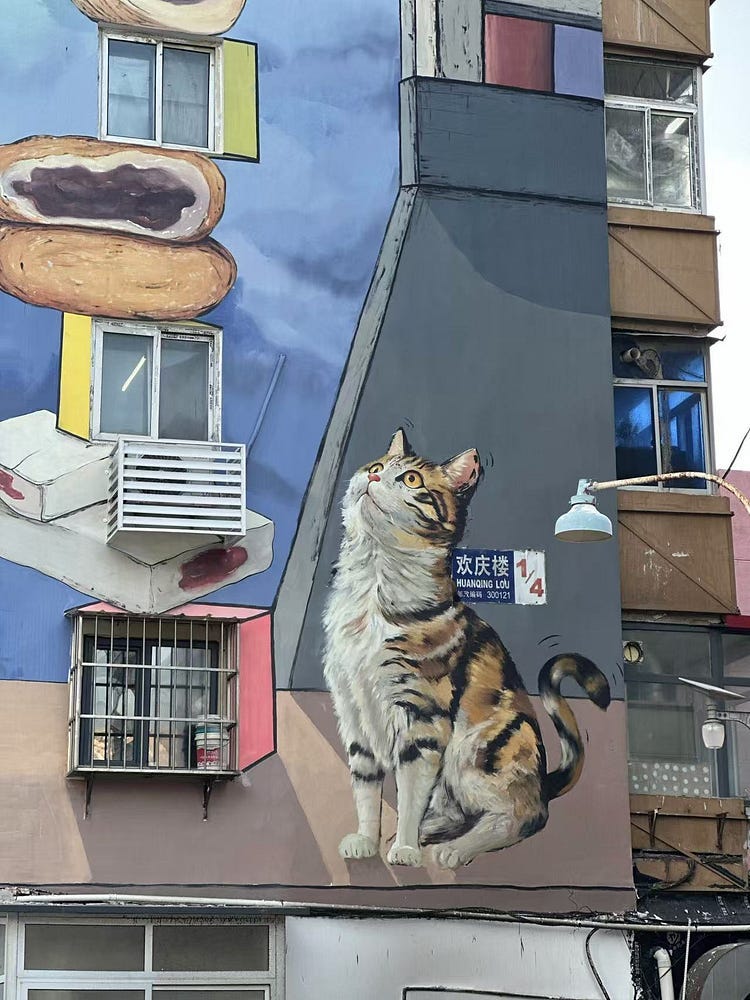
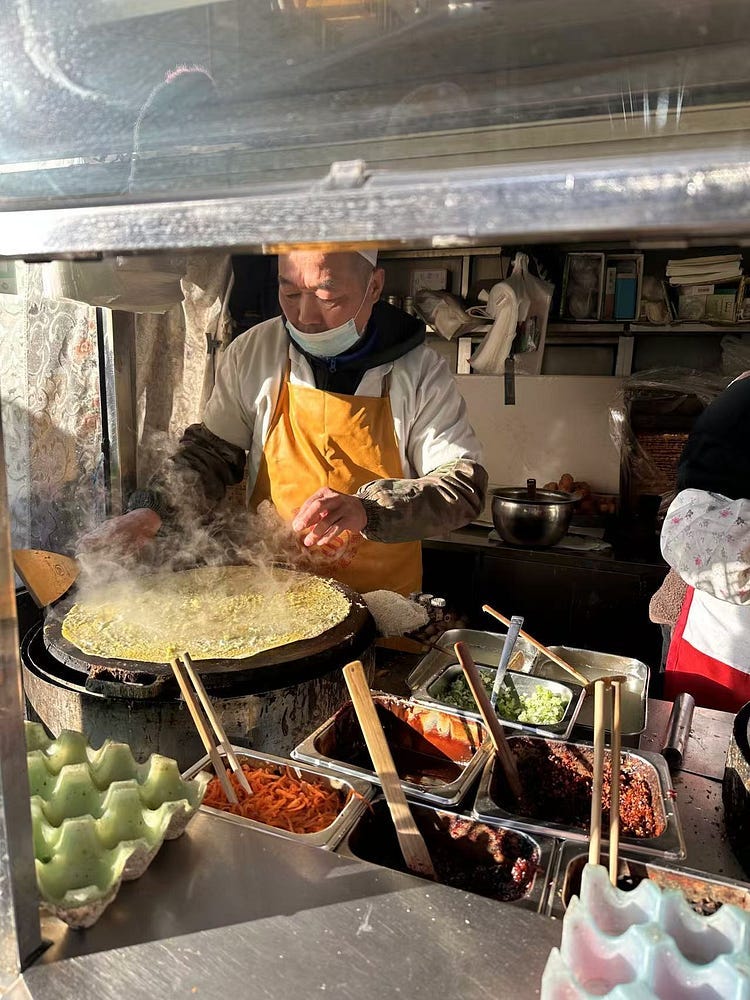

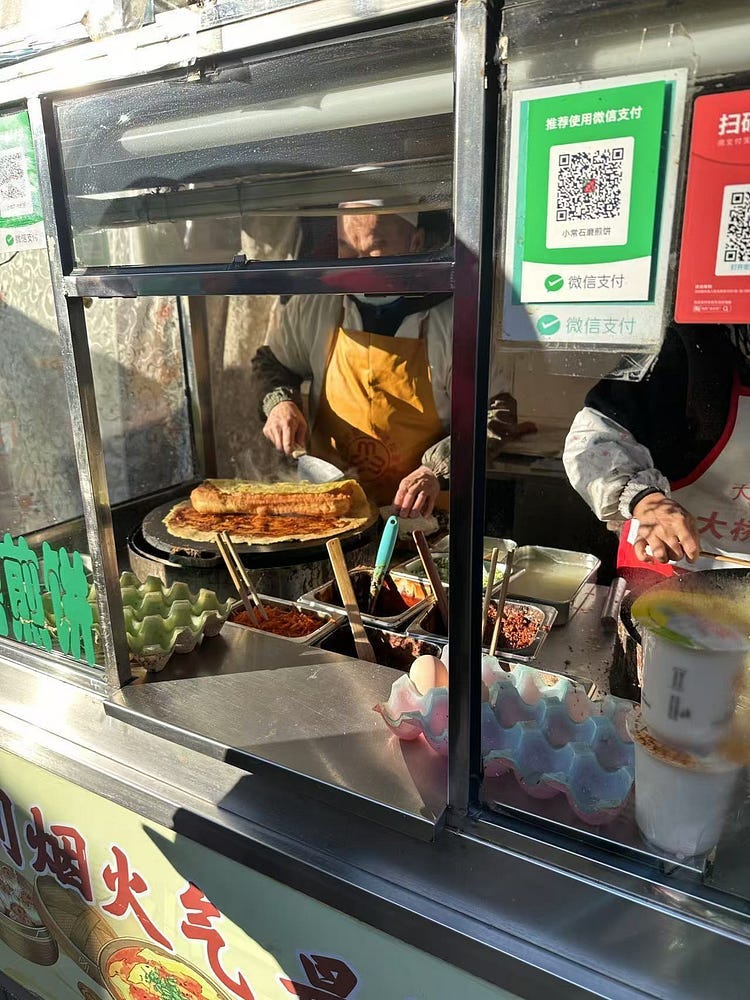
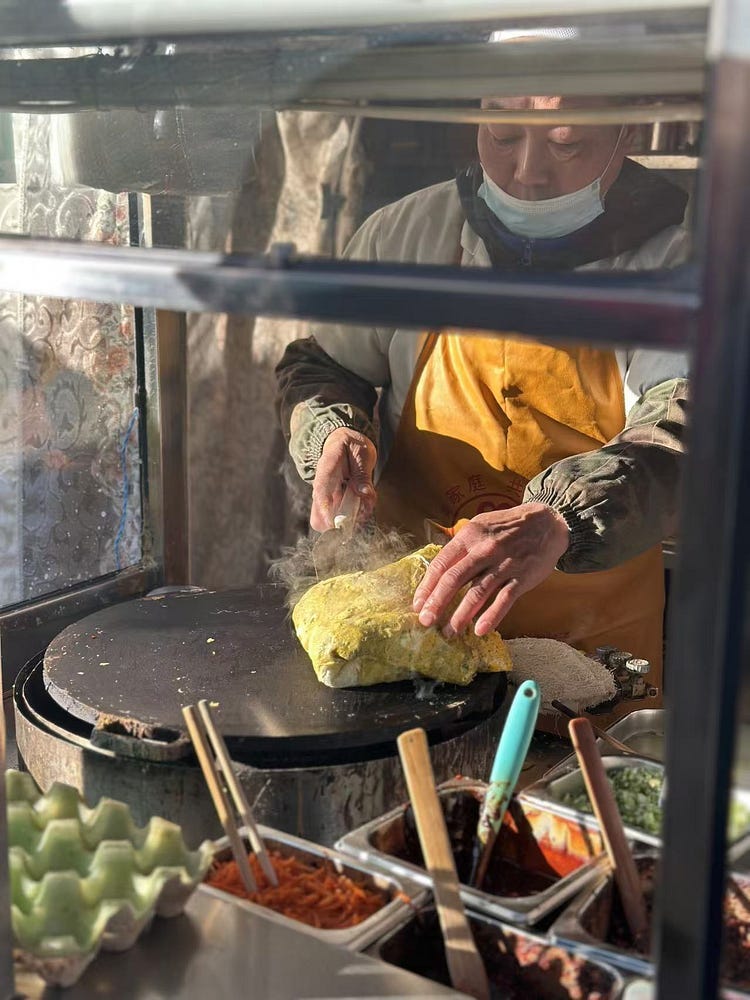







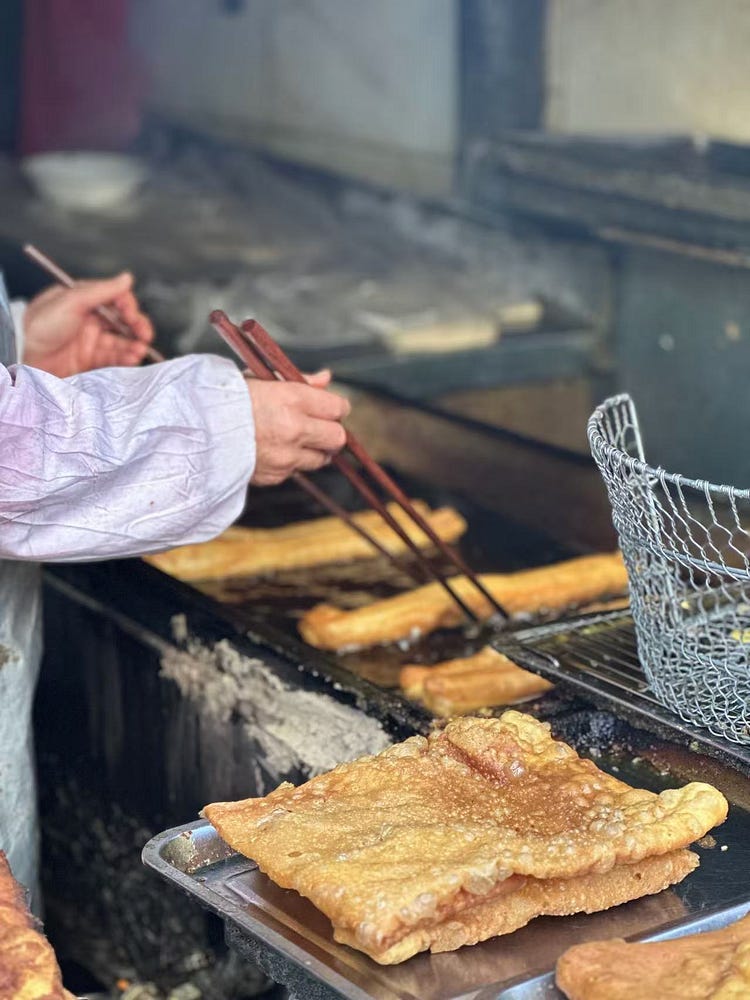

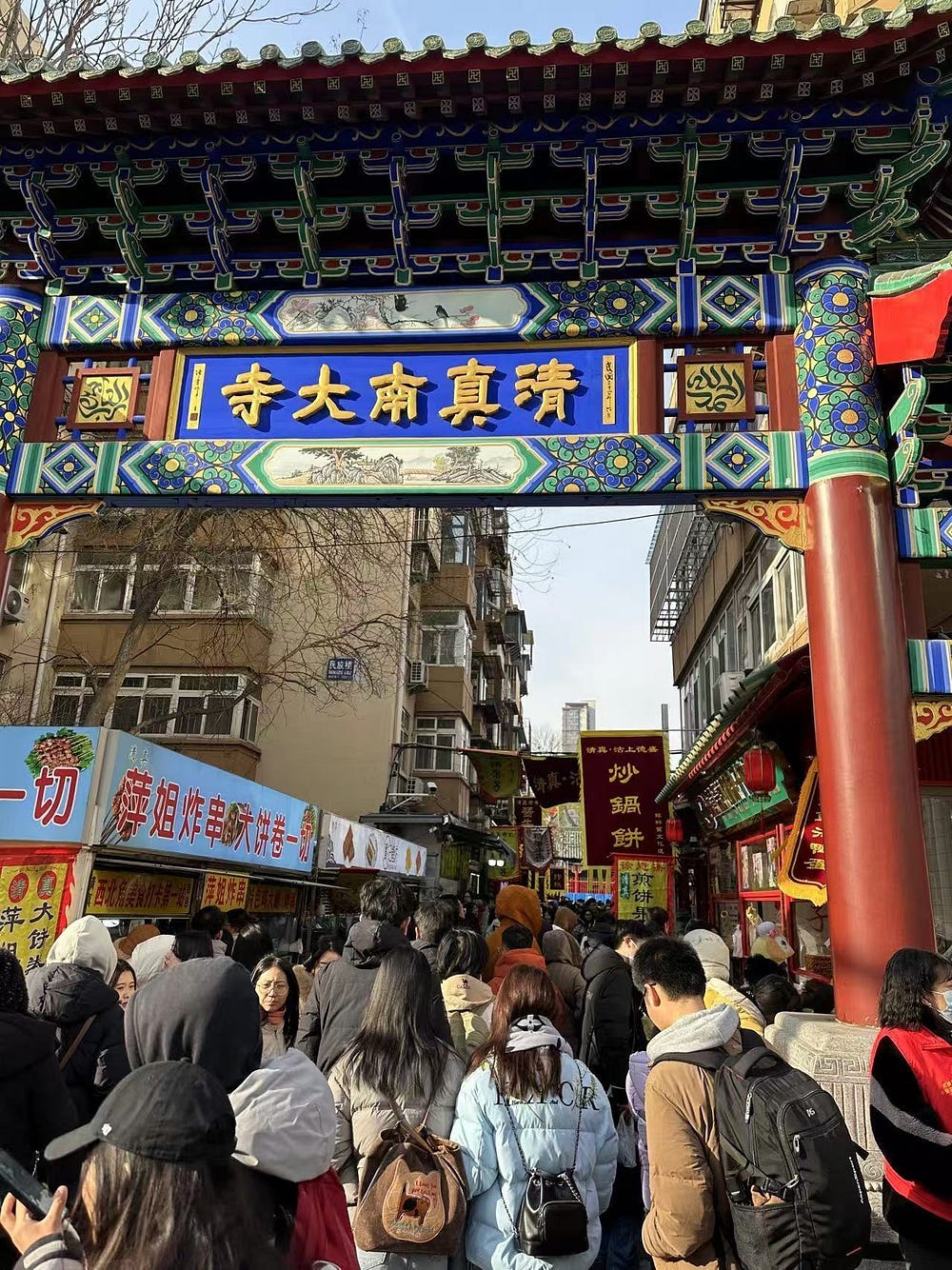
I want to try those foods! Chinese street food is the best.
Dang that food looks good! And those murals are truly amazing 🤩 it’s inspiring how often you get out and explore. Thanks for sharing Paul :)